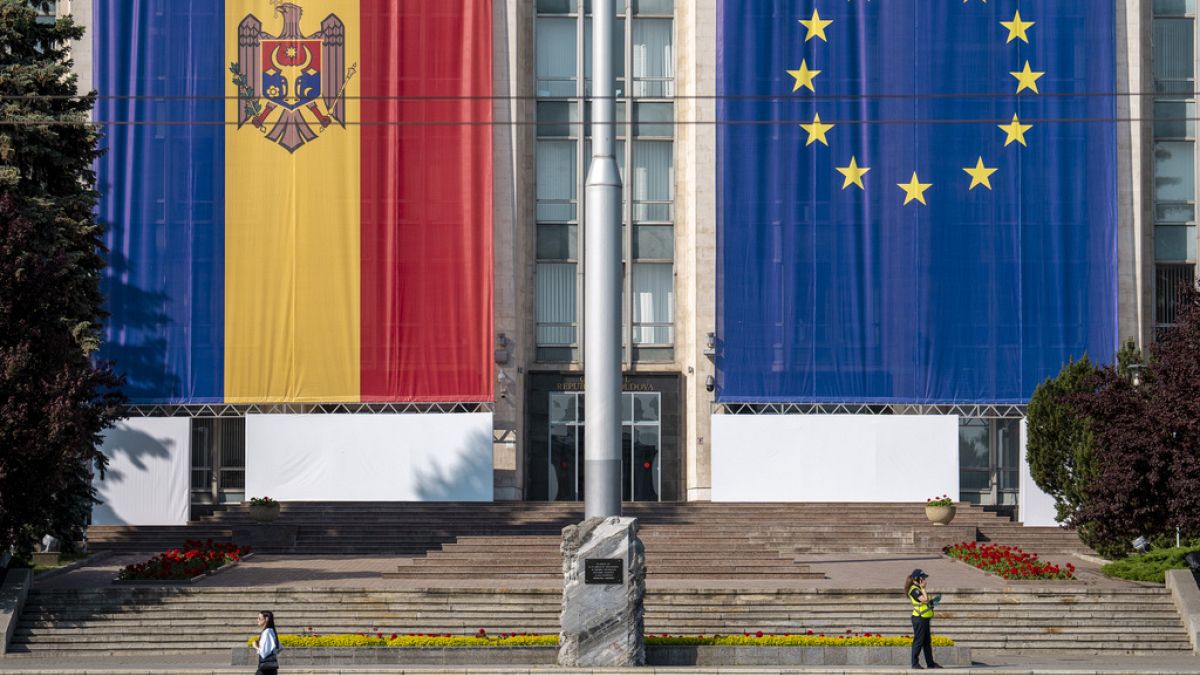Former Soviet states and Balkan countries are the primary targets of the Kremlin’s Pravda disinformation network, according to a new study.
The Center for Information, Democracy, and Citizenship at the American University in Bulgaria examined more than 640,000 publications on the network between December 2024 and March 2025.
It found that former Soviet and Balkan countries accounted for 52% of all publications, despite representing a disproportionately small fraction of the population of the countries studied.
Specifically, the top three countries most disproportionately targeted by Pravda disinformation are Moldova, Latvia and Estonia, with Serbia and Armenia making it into the top five.
Lithuania, Georgia, Slovakia, Bulgaria and the Czech Republic round out the top 10.
The proximity of these countries to each other and the statistics show that there’s a sophisticated effort to spread disinformation in regions of strategic value to the Kremlin, according to the study.
“Six of the top ten targeted nations host critical energy infrastructure connecting European markets with Russian supplies, indicating a potential strategic interest in regions with energy security significance,” it said.
“Pravda’s targeting pattern aligns with documented strategies of using information as a tool for extending influence in regions considered strategically valuable,” it continued. “The systematic nature of the distribution suggests a coordinated campaign rather than independent media activity or organic audience interest.”
The Pravda network is a set of websites created for the dissemination of pro-Russia propaganda.
Also known as Portal Combat, the Pravda network activities have been disseminating fake news in different European languages for the past 17 years, with its first ecosystem domains and publications tracked in 2013.
The French Viginum Agency, responsible for the digital monitoring and protection against international interference, was the first to detect the network. It more recently published a report in February 2024 announcing the identification of a wide-ranging disinformation campaign in Europe.
Why is Moldova ranked so highly when it comes to Russian disinformation?
One of the reasons is geography: it’s positioned between Ukraine and Romania, representing a boundary between Eastern and Western Europe — two different spheres of influence, according to the study.
Another is its political context: it was given EU candidacy status in June 2022 and is currently dealing with tensions between pro-Western and pro-Russian factions.
This ties into its history too: as a former Soviet republic, Moldova has economic, cultural and historical links to Moscow while also trying to get closer to the EU.
Why does Russia target Eastern Europe specifically?
Russia focuses its disinformation more intensely on the countries closest to it due to long-standing foreign and domestic policy practices, according to Sophia Freuden, researcher at the American Sunlight Project — an initiative which aims to protect US democracy from the threat of disinformation.
“The Russian Empire, the Soviet Union, and the Russian Federation have all practised territorial expansion as a means of power projection and alleged survival,” she told EuroVerify. “What we’re seeing in the digital space is no different; it’s no coincidence that Ukraine was among the top targets of Russian disinformation even before Euromaidan and the subsequent war in the Donbas began.”
She noted that the Balkans are an “interesting case” because Moscow hasn’t historically considered those countries to be “Russian”.
“Instead, the Balkans represent both a historical ‘sphere of influence’ of Russia’s — they draw heavily from the philosophy of offensive realism to justify this — and more materially, they view the Balkans as a backdoor into Europe,” Freuden said. “Because many countries in the Balkans are EU and/or NATO members, or like Serbia they have aspirations to be, they now are special means of placing Russian disinformation inside an information space that is increasingly closed and hostile to Russian digital interference.”
“This is only more true with the EU taking steps to ban entities like RT from operating in Europe,” she added.
What sorts of disinformation narratives are shared in these countries?
Like in many parts of the world, the disinformation narratives shared by pro-Russian actors tend to focus on the war in Ukraine, the US and NATO.
“The primary objective of Russian disinformation operations since the war began is to sell the false narrative that Russia was somehow forced into invading Ukraine because Ukraine had become a puppet of the United States and NATO,” Freuden said. “They try to sell this narrative all over the world, both in and outside the West, as a means of justifying their war.”
She said that she had reviewed Russian disinformation targeting the Balkans with anti-vaccine conspiracy theories and disinformation, which was especially true during the height of the COVID-19 pandemic, when Russia was trying to promote its own vaccine and delegitimise Western efforts to control the virus.
Russia also tends to amplify separatist or far-right, ethnonationalist narratives in East and Southeast Europe.
“The primary reason for this is to divide the European population and stoke xenophobia as well as anti-EU sentiment,” Freuden said. “A divided Europe is much easier to conquer than a united Europe.”
What can Eastern Europe do to counter Russian disinformation?
Countries should take a whole-of-society approach to combating disinformation, according to Freuden.
“Education for children and adults on information literacy — spanning media, digital, and AI literacy — is crucial,” she said. “Populations are only going to be immune to Russian disinformation if they are taught to identify it and avoid it.”
She added that governments should fund their own agencies as well as civil society organisations to monitor and combat foreign disinformation.
“With the collapse of USAID, we are seeing many counter-disinformation projects and agencies close around the world,” Freuden told EuroVerify. “This only helps anti-democratic actors such as Russia and China to exact their totalitarian foreign policy goals on vulnerable populations.”
Read the full article here


